Silicone Rubber is widely used in medical, automotive, electronics, construction and other fields due to its excellent temperature resistance, chemical inertness, biocompatibility and elasticity. However, different types of silicone have significant differences in vulcanization methods, physical forms, processing technology and final performance. Wrong selection may lead to product failure, cost increase and even safety hazards.
This article will deeply analyze the four main types of silicone – HTV (high temperature vulcanized silicone), RTV (room temperature vulcanized silicone), LSR (liquid silicone rubber) and HCR (solid compound silicone), and compare their material properties, processing methods, typical applications and selection recommendations to help engineers, buyers and R&D personnel make more accurate decisions.
What are the 4 types of silicone?
The four main types of silicone are HTV (high temperature vulcanized silicone), RTV (room temperature vulcanized silicone), LSR (liquid silicone rubber) and HCR (solid compound silicone). The LS team will take you to learn the definitions, material properties, processing methods and typical applications of these four types.
1. High temperature vulcanized silica gel (HTV)
HTV (High-Temperature Vulcanized Silicone) is vulcanized at a high temperature of 120-180°C, and the molecular chains are cross-linked by peroxide or platinum catalysts to form a three-dimensional network structure.
Material properties
- Temperature resistance: -60°C~250°C for long-term use
- Mechanical properties: tensile strength 8-12MPa, tear strength 30-50kN/m
- Electrical insulation: Volume resistivity>10¹⁵Ω·cm
- Weather resistance: 80% performance retention >rate after 3000h of UV aging test
Processing method
- Compression molding: vulcanization at 170°C/15MPa pressure for 5-15 minutes
- Extrusion: used in the production of continuous products such as cable insulation
Typical Applications
- Automobile turbocharger pipe (resistant to 200°C high temperature oil medium)
- Industrial sealing ring (in accordance with GB/T 3452.1 standard)
- High voltage appliance insulation components (IEC 60296 tested)
2. Room-Temperature Vulcanized Silicone (RTV)
RTV (Room-Temperature Vulcanized Silicone) is vulcanized at room temperature of 20-40°C by moisture (single-component RTV-1) or two-component mixing (RTV-2).
Material properties
| Type | Vulcanization mechanism | Pot life | Curing depth | Shrinkage |
|---|---|---|---|---|
| RTV-1 | Condensation reaction (de-alcoholization type) | 30-90min | <10mm | 0.5-1% |
| RTV-2 | Addition reaction (platinum catalysis) | 2-6h | >50mm | <0.1% |
Processing method
- Single component: direct extrusion construction (needs to be cured by contact with air moisture)
- Two-component: AB components are mixed in proportion and then potted
Typical applications
- Electronic component potting (UL94 V-0 flame retardant grade)
- Building curtain wall sealant (conforms to ASTM C920 standard)
- Cultural relics replication mold (0.1μm level detail replication capability)
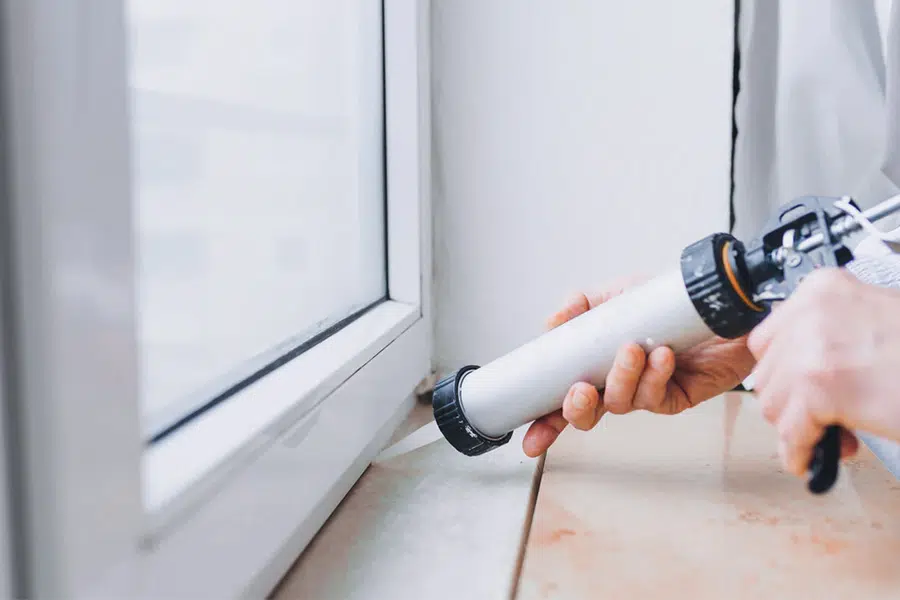
3. Liquid silicone rubber (LSR)
LSR (Liquid Silicone Rubber) is a platinum-catalyzed two-component liquid that is rapidly vulcanized (20-60 seconds) at 120-200°C by injection molding.
Material properties
- Fluidity: Viscosity 1,500-80,000cP (suitable for thin-walled parts molding)
- Biocompatibility: ISO 10993-5 cytotoxicity tested
- Dimensional stability: molding shrinkage 0.1-0.3%
- Transparency: Visible light transmittance>90% (optical grade product)
Processing method
Liquid Injection Molding (LIM):
- Mould temperature: 130-180°C
- Injection pressure: 50-150MPa
- Vulcanization time: 10-15 seconds per 1mm according to thickness
Typical Applications
- Medical Tubing (FDA Class VI Approved)
- Baby pacifier (according to EN 14350-2 migration test)
- Automotive lamp cover seal (UV yellowing resistance class ΔE<1.5)
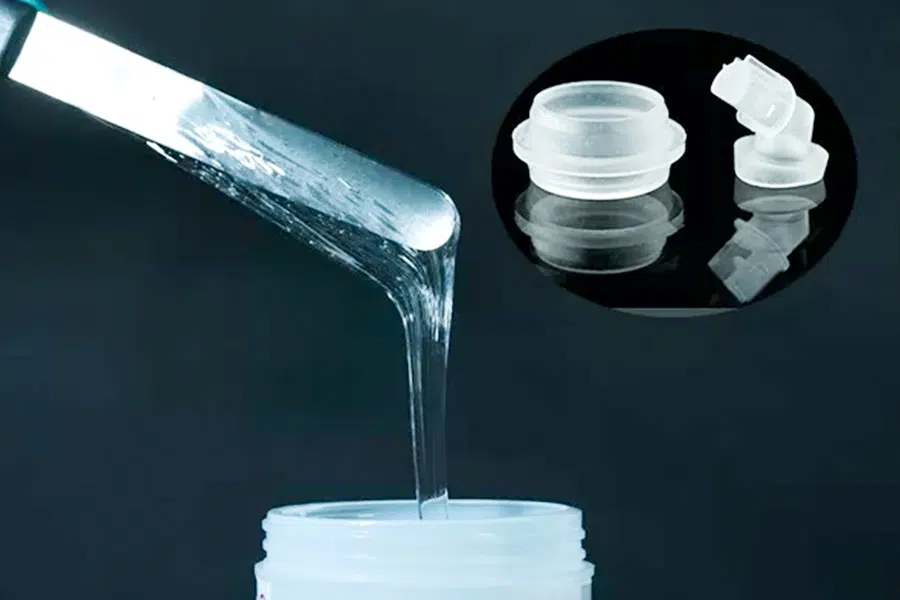
4. Solid Compound Silica Gel (HCR)
HCR (Heat-Cured Rubber) is a premixed solid rubber compound that needs to be molded and vulcanized at 160-180°C, containing reinforcing fillers such as silica.
Material properties
Dynamic Performance:
- Spring>90% (ASTM D2632)
- Compression set<10% (70°C×22h)
- Fatigue resistance: no cracks after 3 million dynamic tests
- Hardness range: 20-80 Shore A
Processing method
- Internal mixer compounding: base glue, silica, structuring agent (120°C×2h)
- Molding vulcanization: 160°C× 5-10 minutes (1 minute for every 1mm increase in thickness)
Typical Applications
- High-speed rail shock absorbing pads (dynamically tested according to DIN 53507)
- Food Grade Seals (FDA 21 CFR 177.2600 Compliant)
- Oil-resistant O-rings (ASTM No.3 oil expansion resistance <10%)
What are the differences between the four silicone types?
The following is a detailed comparison table of four types of silicone (HTV, RTV, LSR, HCR), covering the core differences such as vulcanization method, physical properties, processing technology, and application areas:
Quick comparison table of four types of silicone
| Comparison items | HTV (high temperature vulcanized silicone) | RTV (room temperature vulcanized silicone) | LSR (liquid silicone rubber) | HCR (solid compound silicone) |
|---|---|---|---|---|
| Vulcanization method | High temperature vulcanization (120-180℃) | Room temperature vulcanization (20-40℃) | High temperature injection vulcanization (120-200℃) | High temperature compression vulcanization (160-180℃) |
| Initial form | Solid raw rubber (block/sheet) | One-component paste/two-component liquid | Low viscosity liquid (two-component) | Pre-mixed solid rubber (containing filler) |
| Vulcanization time | 5-15 minutes | 2-24 hours (depending on type) | 20-60 seconds (rapid molding) | 5-10 minutes |
| Mechanical strength | High (tensile strength 8-12MPa) | Medium-low (tensile strength 2-6MPa) | Medium-high (tensile strength 4-10MPa) | High (tensile strength 6-15MPa) |
| Temperature range | -60℃~250℃ | -50℃~200℃ | -50℃~200℃ | -60℃~220℃ |
| Typical hardness | 30-80 Shore A | 10-60 Shore A | 10-70 Shore A | 20-80 Shore A |
| Processing equipment | Molding machine/extruder | Manual glue gun/potting equipment | Liquid injection machine (LIM) | Internal mixer + molding machine |
| Mold cost | Medium ($5k-20k) | Low ($1k-5k) | High ($50k-200k) | Medium ($10k-50k) |
| Suitability for mass production | Small and medium batches | Very small batches/on-site construction | Large batches (automated production) | Medium and large batches |
| Typical applications | Automotive seals, high-temperature cable insulation | Electronic potting, building sealants | Medical catheters, baby pacifiers | Shock pads, fatigue-resistant seals |
| Special advantages | Best high temperature resistance | No heating equipment required | Ultra-high precision (±0.1mm) | Excellent dynamic fatigue performance |
Summary of key differences
Vulcanization conditions:
HTV/HCR requires high temperature, suitable for factory production; RTV cures at room temperature, suitable for on-site repair; LSR requires special injection equipment.
Physical properties:
HTV/HCR has high mechanical strength, LSR has high precision, and RTV is the most convenient to operate.
Cost efficiency:
LSR molds have the highest cost but extremely fast mass production efficiency (60 seconds/piece), while RTV has the lowest cost but slow efficiency.
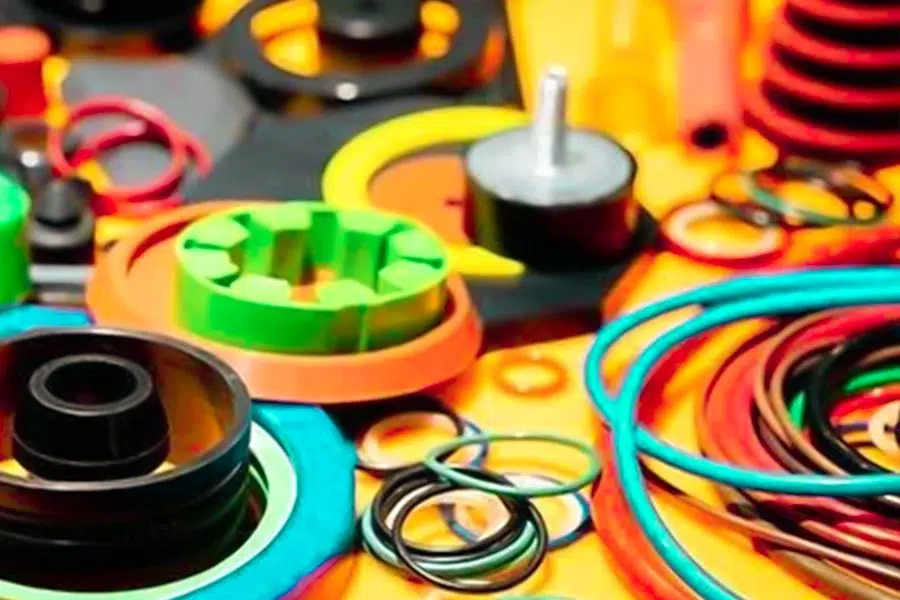
How to choose HTV, RTV, LSR, HCR?
Silicone materials are widely used in many fields such as medical, electronics, automotive, and industry. However, different types of silicone, such as HTV, RTV, LSR, HCR, have significant differences in terms of temperature resistance, vulcanization method, production efficiency, and cost. If you choose the wrong material, the product may fail, the cost will rise significantly, and even cause safety hazards. Therefore, it is very important to choose the right silicone material, and the following is a detailed introduction to the selection method:
Choose according to the temperature requirements
- Ultra-high temperature environment (250°C): HTV is the best choice, it is the only silicone material that can withstand high temperatures of 250°C for long periods of time.
- Medium to high temperature environments (around 200°C): HCR or special LSRs can be considered, which can be adapted to this temperature range.
- Ambient temperature up to 200°C: RTV or LSR can meet the requirements, which can be further determined in combination with other factors.
Choose according to the scale of production
- High-volume production (100,000 pieces): LSR is the most suitable for ultra-fast 60-second vulcanization, making it ideal for injection molding processes and efficient for large-scale production.
- Low- to medium-volume production (1k – 50k pieces): HTV or HCR are good options for compression molding and can meet production quantities while keeping costs under control.
- Minimal batch production or restoration: RTV is the preferred choice because it does not require a tool, can be operated manually, and is flexible and convenient, effectively reducing production and repair costs.
Select according to the accuracy of the product
- High-precision products (± 0.1 mm): LSR enables high-precision product manufacturing due to the advantages of liquid injection molding and burr-free.
- Products with general precision requirements: HTV or HCR can meet production requirements by compression molding and are cost-effective.
- Low-precision products or for filling and sealing: RTVs are up to the task, easy to operate and inexpensive.
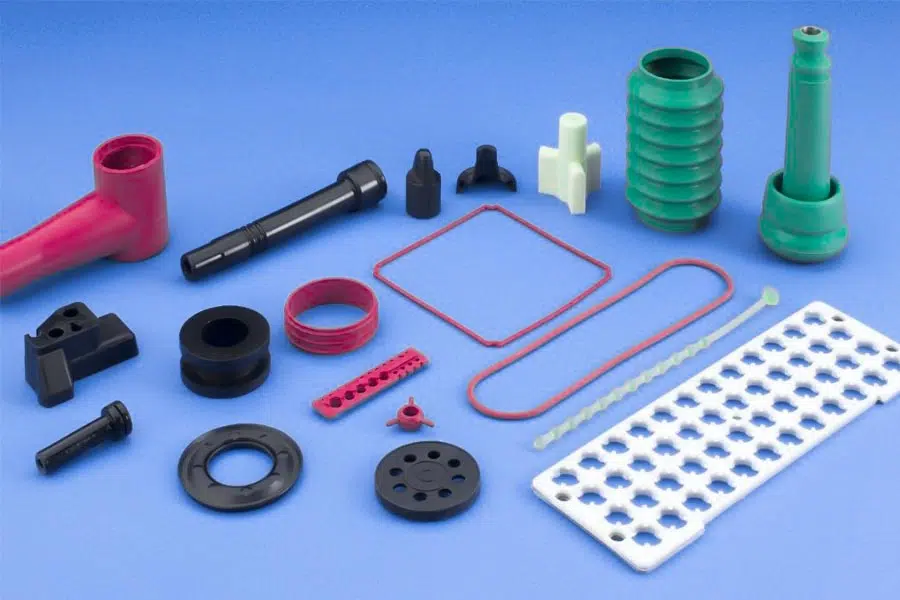
Choose by cost budget
| Type | Mold cost | Unit cost | Suitable budget |
|---|---|---|---|
| RTV | Lowest (<¥1k) | ¥1-5 | Limited budget |
| HTV | ¥5k-20k | ¥0.5-2 | Medium budget |
| HCR | ¥10k-50k | ¥0.3-1 | Medium to high budget |
| LSR | ¥50k-200k | ¥0.1-0.5 | High budget for mass production |
How to Avoid Common Mistakes?
RTV silicone peeling problem
Causes
- Oil, dust, or release agent residues on the substrate can significantly affect the bonding of RTV silicone to the substrate.
- When dealing with non-polar materials (e.g., PP, PE), no primer is used, making it difficult for silicone to adhere firmly.
Resolution
- Clean the surface: Use isopropyl alcohol (IPA) or acetone to wipe the surface of the substrate to ensure that there is no grease, dust and other impurities on the surface, creating a good foundation for the adhesion of silicone.
- Polishing: For smooth surfaces such as metal and glass, sandblasting or sandpaper can be used to gently polish to increase the surface roughness and improve the adhesion of silicone.
- Use primer: Apply a special primer to materials that are difficult to stick, such as plastic and silicone itself, to enhance the adhesion between the silicone and the material.
LSR/HTV silicone bubble problem
Cause of the problem
- Inhaling air during the mixing process, especially when mixing LSR A/B components, can easily lead to air mixing if they are not sufficiently mixed.
- There is a defect in the mold exhaust design, and the gas cannot be discharged smoothly from the mold.
- The rate of vulcanization is so fast that the gas does not have time to escape from the silica gel.
Solution
Vacuum degassing
- LSR: After mixing, a vacuum operation (-0.1MPa) is performed for a controlled time of 5 – 10 minutes to remove the air from the mixture.
- HTV: When mixing rubber, a vacuum mixer is used to reduce the possibility of air mixing.
Optimize the mold
- Add vent slots: Vent vents with a depth of 0.02 – 0.05mm are created in the mold to facilitate gas discharge.
- Set up an overflow well: Set up an overflow well to trap residual air bubbles and prevent them from remaining in the product.
Adjust the process
- Reduced Injection Rate (LSR): Appropriate reduction of injection velocity to give sufficient time for the gas to escape.
- Step-by-step vulcanization: pre-vulcanization at low temperatures, followed by complete vulcanization at high temperatures, gives the gas more opportunity to be discharged.
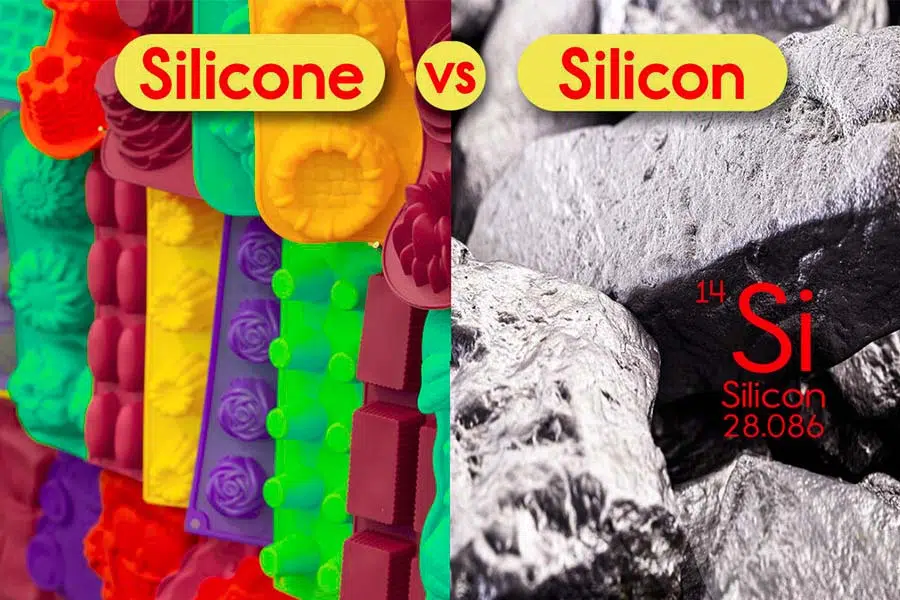
HCR silica gel is not mixed evenly
Cause of the problem
- The silica filler is not evenly dispersed during the mixing process.
- The mixing effect is affected by the inappropriate temperature or insufficient time during mixing.
Solution
Test metrics
- Mooney viscosity: Ensure that the fluctuation range of Mooney viscosity (ML(1 4)121°C) is less than ±5MU, so as to ensure the uniformity of mixing.
- Rubber agent test: Through the test of T90 time, the consistency of the mixture is verified, and the consistency of product quality is guaranteed.
(4) Other common problems quick reference table
| Problem phenomenon | Possible cause | Solution |
|---|---|---|
| RTV incomplete curing | Humidity <30% or substrate blocks moisture | Spray water mist or use two-component RTV-2 |
| Oil on the surface of LSR products | Platinum catalyst poisoning (sulfur, amines) | Clean equipment/change to anti-poisoning LSR brand |
| HTV low tear strength | Insufficient amount of vulcanizer | Increase the amount of peroxide (0.5-1.2phr) |
| HCR rebound rate decreases | Aging or over-mixing | Control the internal mixing temperature <130℃ and add antioxidants |
Conclusion
In industrial applications, it is crucial to choose the right type of silicone. HTV silicone has excellent high temperature resistance and is suitable for automotive and industrial sealing; RTV silicone is easy to operate and is ideal for electronic potting and building sealing; LSR silicone has become the first choice for medical and food-grade products due to its high precision and biocompatibility; and HCR silicone is widely used in shock absorption and sealing due to its excellent elasticity and fatigue resistance. With the advancement of technology, new materials such as environmentally friendly, 3D printing and smart silicone are emerging, providing more possibilities for various industries. For silicone selection recommendations for specific applications, please consult our team of material experts. We will provide the best solution based on your temperature requirements, production needs and certification standards.

📞 Phone: +86 185 6675 9667
📧 Email: info@longshengmfg.com
🌐 Website: https://www.longshengmfg.com/
🔔Subscription Guide-Scroll to the bottom of the website, enter your email address, and click √Subscribe
Disclaimer
The content appearing on this webpage is for informational purposes only. LS makes no representation or warranty of any kind, be it expressed or implied, as to the accuracy, completeness, or validity of the information. Any performance parameters, geometric tolerances, specific design features, quality and types of materials, or processes should not be inferred to represent what will be delivered by third-party suppliers or manufacturers through LS’s network. Buyers seeking quotes for parts are responsible for defining the specific requirements for those parts. Please contact to our for more information.
Team LS
This article was written by various LS contributors. LS is a leading resource on manufacturing with CNC machining, sheet metal fabrication, 3D printing, injection molding,metal stamping and more.
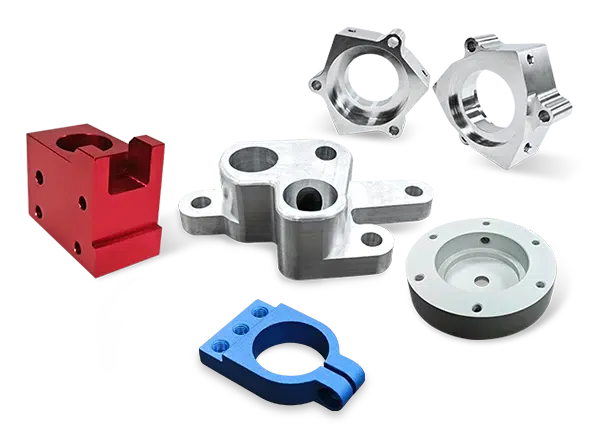
🔔Subscription Guide
Step 1: Slide the current reading page to the bottom of the website
Step 2: Enter your email address
Step 3: Click √ to subscribe
FAQs
1. What are the 4 types of silicon?
The four main industrial types of silicon include monocrystalline silicon (a high-purity semiconductor material used to make chips and integrated circuits), polycrystalline silicon (the main raw material for solar cells, which is less expensive but less efficient), amorphous silicon (used in liquid crystal displays and thin-film transistors, which is flexible but less stable), and silicon compounds (such as silica for glass and optical fibers, silicon carbide for high-temperature electronics and wear-resistant materials), which are used in electronics, energy, and other materials due to differences in crystal structure, purity, and physical properties. The field of optoelectronics and special materials plays an irreplaceable role.
2. How many types of silicone are there?
Silica gel can be divided into four categories according to the vulcanization method: high-temperature vulcanized silicone (HTV, which needs to be vulcanized at 120-180°C for high-temperature seals), room-temperature vulcanized silicone (RTV, which contains moisture-cured RTV-1 and two-component mixed-cured RTV-2, suitable for architectural sealing and electronic potting), liquid silicone rubber (LSR, which is used by injection molding process for medical devices and precision parts), and solid-state compound silicone (HCR, which needs to be molded after mixing, suitable for shock-absorbing and fatigue-resistant parts). Each category can be subdivided into hundreds of commercial grades according to hardness, temperature resistance, electrical conductivity and other performance indicators to meet different industrial needs.
3. What is the difference between type 1 and type 2 silicone?
Type 1 silica gel (RTV-1) is a one-component moisture curing product that undergoes a condensation reaction (dealcoholization or deketoxime) by absorbing moisture from the air, and is simple to operate but has a limited curing speed and depth (typically < 10mm); Type 2 silica gel (RTV-2) needs to be mixed with A/B components in proportion and solidified by platinum-catalyzed addition reaction, with no by-product release and very low shrinkage rate (<0.1%), which is suitable for deep potting and precision mold making, but the mixing ratio and operation time need to be strictly controlled.
4. What is the difference between 100% silicone and 100% RTV silicone?
“100% silicone” is a material declaration, which means that the product is completely based on siloxane polymer (inorganic fillers such as silica may be added but no organic modified ingredients), covering a variety of vulcanization processes such as HTV and LSR; “100% RTV silica gel” refers to a product cured by a room temperature vulcanization process (with a crosslinker and catalyst before curing, such as a Si-OR group in a single component or a Pt catalyst in a two-component group) that is not cured in a paste or liquid state (such as a sealant or potting compound), and has a similar chemical structure to pure silica gel after curing, but the process performance is significantly different.


